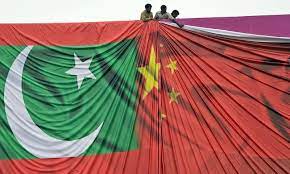Mr Shehbaz Sharif, known as “Shahbaz Speed” for his dynamic leadership, is poised to assume the top executive role in Pakistan, bringing relief to the establishment and coalition partners but concern to the bureaucracy due to his assertive governance style. Taking charge in April 2022 amidst a looming default, he navigated through IMF negotiations after Ishaq Dar’s approach failed, securing crucial funding that averted a financial crisis and provided a lifeline for economic stabilization. Subsequently, the establishment implemented key administrative measures, including enhanced border control and anti-smuggling initiatives, which bolstered the stock market, stabilized the currency, and satisfied IMF conditions, maintaining economic stability through the interim government period.
As Shehbaz Sharif prepares to lead Pakistan’s next government, he faces critical decisions to drive investment, enhance exports, foster trade substitution, improve agricultural productivity, and advance research, innovation, and education. However, financial constraints, significant debt, and investment hesitancy from both domestic and foreign private sectors, compounded by challenges in real estate and manufacturing due to low demand and high taxes, present formidable obstacles.
For Pakistan, attracting investment and boosting trade with affluent Western nations like Europe and the USA would be ideal for addressing its economic challenges. However, these countries’ private sectors, which drive their economies, view Pakistan with caution due to political instability, security concerns, and economic issues such as inconsistent policies and regulatory barriers. Additionally, transparency, governance, and legal system concerns deter Western investors. Geopolitical factors and strategic interests, particularly Pakistan’s close relationship with China, further complicate engagement from the West. With these hurdles and competition from other emerging markets, it’s tough for Pakistan to draw significant Western investment. Thus, Pakistan’s most viable option is to deepen its ties with China, which has shown a consistent willingness to support Pakistan through its economic difficulties in the current geopolitical landscape.
Given the constraints, Mr Shehbaz Sharif’s pragmatic approach should be to leverage CPEC-1 and CPEC-2.0 for maximum benefit. In this discussion, we focus on CPEC-1’s potential to catalyze economic recovery. To date, projects totaling $19 billion have been completed, with some estimates suggesting up to $25 billion; however, we’ll consider $19 billion for our analysis. Currently, 27 projects valued at $13.7 billion are in progress, slated for completion by 2025. Furthermore, 36 projects, estimated at $26.3 billion, are planned, aiming for a 2030 finish. In the energy sector specifically, 11 projects totaling $12 billion have been finalized, and four projects worth $6 billion are ongoing, with a completion target of 2025.
By fully accelerating CPEC-1 efforts, Shahbaz Sharif could secure an investment exceeding $46 billion in the coming five years, contingent upon eliminating bureaucratic, administrative, and political barriers. His strategy should prioritize the completion of both ongoing and planned projects, with a special focus on capital-intensive initiatives. Key among these are the development of industrial zones through Sino-Pakistani collaboration and the construction of a 2600 km rail track, the largest single CPEC project at nearly $7 billion, along with the timely completion of infrastructure and energy projects.
Activating and fully operationalizing the various Special Economic Zones under the China-Pakistan Economic Corridor framework will be pivotal for the new government’s success in revitalizing Pakistan’s economy. The Gwadar Special Economic Zone, sprawling over 1000 acres, aims to diversify the industrial base with focuses on processing, manufacturing, home appliances, pharmaceuticals, building materials, automobiles, agriculture, and more.
The Allama Iqbal Industrial City, covering 3217 acres, is set to bolster textiles, engineering, electronics, chemicals, food processing, pharmaceuticals, automobiles, packaging, and building materials industries. The Dhabeji Special Economic Zone, extending over 1530 acres, plans to enhance light engineering, automotive parts, chemicals, electronics, textiles, steel, and building materials sectors. The Bostan Special Economic Zone, with 1000 acres, is geared towards fruit processing, agricultural machinery, pharmaceuticals, motorbike assembly, and various other industries.
The key to success of the new government rests with efficiently advancing CPEC-1 by overcoming bureaucratic and administrative hurdles and securing the remaining $40 billion investment over the next five years significantly propelling Pakistan’s economic growth. This strategic move would not only accelerate infrastructure and energy projects but also boost industrialization, leading to a substantial increase in GDP and stabilizing the economy. Moreover, the successful execution of CPEC projects would enhance Pakistan’s attractiveness to international investors, potentially leading to increased foreign direct investment in various sectors and improving financial stability.
Additionally, pipeline projects like the ICT Model Industrial Zone Islamabad, Industrial Park on Pakistan Steel Mill Land, Mirpur Industrial Zone, Mohmand Marble City, and Moqpondass Special Economic Zone are anticipated to further amplify industrial capabilities. The successful activation of these zones is crucial for stimulating economic growth, attracting investment, and generating employment, thereby playing a central role in the government’s economic revival strategy.
The new government should also prioritize the diverse range of infrastructure projects under the CPEC to catalyze economic revitalization, enhance trade and investment, generate employment opportunities, and alleviate the challenges faced by the populace. The completion of four road projects at a cost of Rs. 126,385 million, the Orange Line Metro Train costing Rs. 1926 million, the Cross-Border Optical Fiber Cable at $44 million, and the Digital Terrestrial Multimedia Broadcast at $4 million, which collectively created 46,000 jobs, sets a solid foundation. With five road projects totaling Rs. 71,733 million and 813 km currently underway, and significant future endeavors like the ML-1 railway upgrade spanning 1733 km at $6806 million promising 24,000 jobs, alongside other road developments and digital infrastructure initiatives, the focus on these infrastructure projects is imperative. The government’s commitment to these initiatives can significantly boost economic performance, attract investments, and substantially improve the quality of life for the citizens, marking a pivotal step towards sustainable development and prosperity.
In the energy sector, 11 projects worth $12 billion have been concluded including coal-fired power plants, solar parks, wind farms, and hydroelectric projects, contributing significantly to Pakistan’s energy sector by enhancing capacity and diversifying energy sources. while four projects valued at $6 billion are underway, aiming for a 2025 completion. The completion of under construction projects aimed at addressing Pakistan’s energy needs, thereby expected to bolster economic growth, reduce energy shortages, and contribute to sustainable development.
The CPEC has already created tens of thousands of jobs in Pakistan through its various projects, ranging from infrastructure to energy and industrial zones whereas, CPEC is estimated to create over a million jobs in Pakistan by the end of the project in 2030. These figures include direct employment opportunities in construction, engineering, and project management, as well as indirect jobs through the stimulation of local businesses, manufacturing, and services related to CPEC projects.
The direct and indirect employment opportunities generated through CPEC projects would significantly reduce unemployment rates and elevate household incomes, directly impacting living standards. Economic growth and stability brought about by these investments could lead to better control of inflation, contributing to price stability and providing considerable relief to the common people. Improved public services, increased job opportunities, and enhanced infrastructure would directly benefit the common man, elevating their quality of life and overall economic well-being.
The key to success of the new government rests with efficiently advancing CPEC-1 by overcoming bureaucratic and administrative hurdles and securing the remaining $40 billion investment over the next five years significantly propelling Pakistan’s economic growth. This strategic move would not only accelerate infrastructure and energy projects but also boost industrialization, leading to a substantial increase in GDP and stabilizing the economy. Moreover, the successful execution of CPEC projects would enhance Pakistan’s attractiveness to international investors, potentially leading to increased foreign direct investment in various sectors and improving financial stability.























